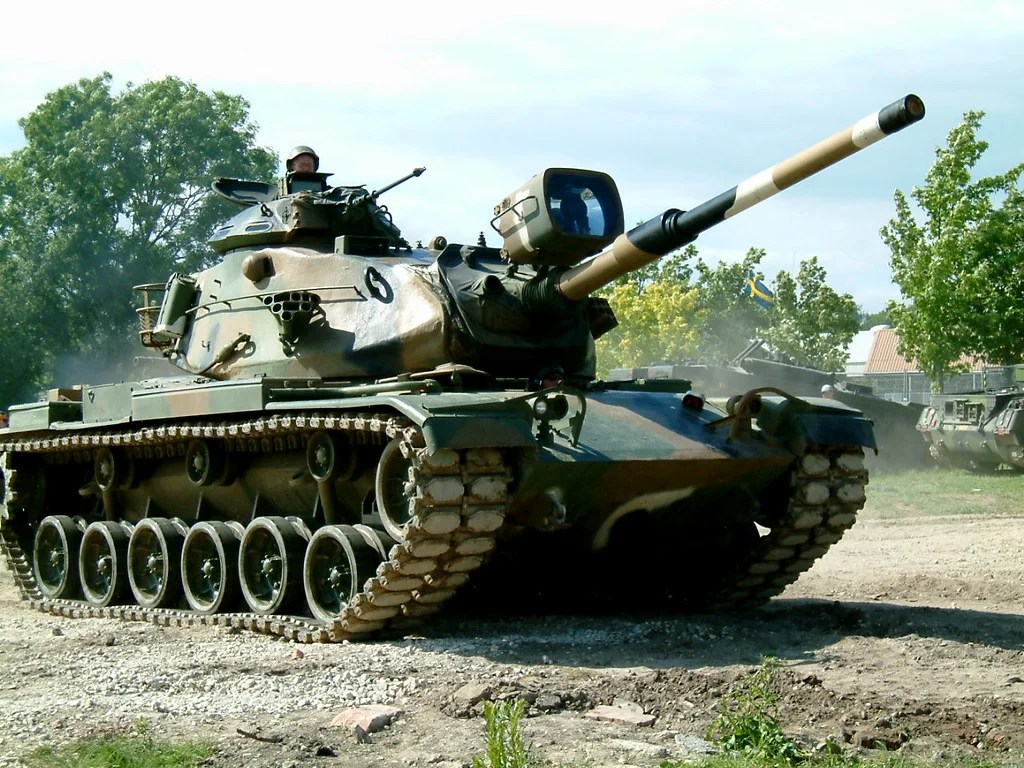The M60 is perhaps the most iconic, battle-proven tank ever built—a Cold War wonder that has survived the test of time. It bridged the gap between post–World War II Pattons and later behemoths like the M1 Abrams, combining ruggedness, massive firepower, and heavy armor into one tough vehicle. More than 15,000 units rolled off the assembly line, serving on numerous continents for over four decades and adapting to each successive generation of war.
As tensions during the Cold War began to rise following the Korean War, America needed something greater than the M48 Patton—a tank that could withstand the new Soviet armor threat. The M60 was that answer. Entering service in 1960 officially, it was a more efficient, more resilient, and more deadly vehicle that gave the United States and its allies a trustworthy main battle tank that could confront any adversary on any battlefield.
Central to the M60 was its 105mm M68 rifled cannon, an American version of the highly regarded British L7 gun. Renowned across NATO for reliability and dependability, the cannon soon became a benchmark of excellence and one of the most revered tank cannons of its time.
Although the M60 shared some design elements of the M48—hull and engine configuration—it brought some important innovations. Its turret was wedge-shaped, with heavier armor and an overall design better protecting and accommodating the crew. The M60 continued to undergo constant improvements over the years, each new variant being an improvement over the last in order to keep up with the modern battlefield.
The M60A1 was the first serious iteration of the design, with a larger turret that made operations smoother and gave the crew a more comfortable living space. That was followed by the M60A2—a radical though imperfect model with an enormous 152mm gun that could fire shells and guided missiles. The concept was ahead of its time but too complicated, so it was eventually replaced by the M60A3. That late-1970s modernization wasn’t about new weapons or armor but rather transformed tank warfare by technology—introducing laser rangefinders, improved optics, and enhanced night-fighting capabilities.
These advancements made the M60A3 an actual battlefield workhorse. Crews could engage targets with accuracy in total darkness, fog, or even heavy rain. Its arsenal had a laser rangefinder, ballistic computer, and thermal imaging—all cutting-edge technology at the time. Smoke launchers, NBC protection, and automatic fire suppression helped improve survivability, too, to make the M60A3 one of the safest and most reliable tanks on the battlefield.
Though the M60 never saw service in Vietnam, it found its wings elsewhere. Israeli forces used it to devastating effect in the 1973 Yom Kippur War, in which it directly fought Soviet-made T-62s and gained a reputation for resilience and hitting power. Later, in the Lebanon wars, Israeli M60S fitted reactive armor against more sophisticated anti-tank missiles—yet more proof of the platform’s adaptability and longevity.
The M60’s subsequent major appearance was during the 1991 Gulf War. U.S. Marine Corps forces sent forward upgraded M60A1s with enhanced armor and cutting-edge night vision equipment. Despite having to share the spotlight with the new Abrams, the M60 held its own—blowing through Iraqi defenses and assisting in the liberation of Kuwait. Its toughness and durability once again demonstrated how it remained such a prime weapon of war.
Beyond US service, the M60 became infamously famous worldwide. Allied nations such as Egypt, Turkey, Saudi Arabia, Taiwan, and Israel all employed their own version, often with indigenous enhancements. Many of these tanks remain in active service today, fitted with digital fire-control systems, stabilizers, and improved armor protection—keeping the old workhorse going well into the 21st century.
Even as America phased out the M60, its DNA lived on. Its technology, its design philosophy, and its combat experience influenced the M1 Abrams directly, passing on lessons on crew protection, fire control, and survivability. The Abrams stood on those foundations and set new standards for every generation of tanks that followed.
Now, more than sixty years after it first went into operation, the M60 still growls in locations throughout the globe—a reminder of a tank from another time that is incredibly scarce. Its very existence is a testament to sensible engineering, practical design, and the human ingenuity that helped craft it. The M60 is more than a weapon of war; it’s a working testament to reliability and balance. Even decades later, it remains a beacon of how creativity and talent can create a legend that won’t be forgotten anytime soon in the books of history.


